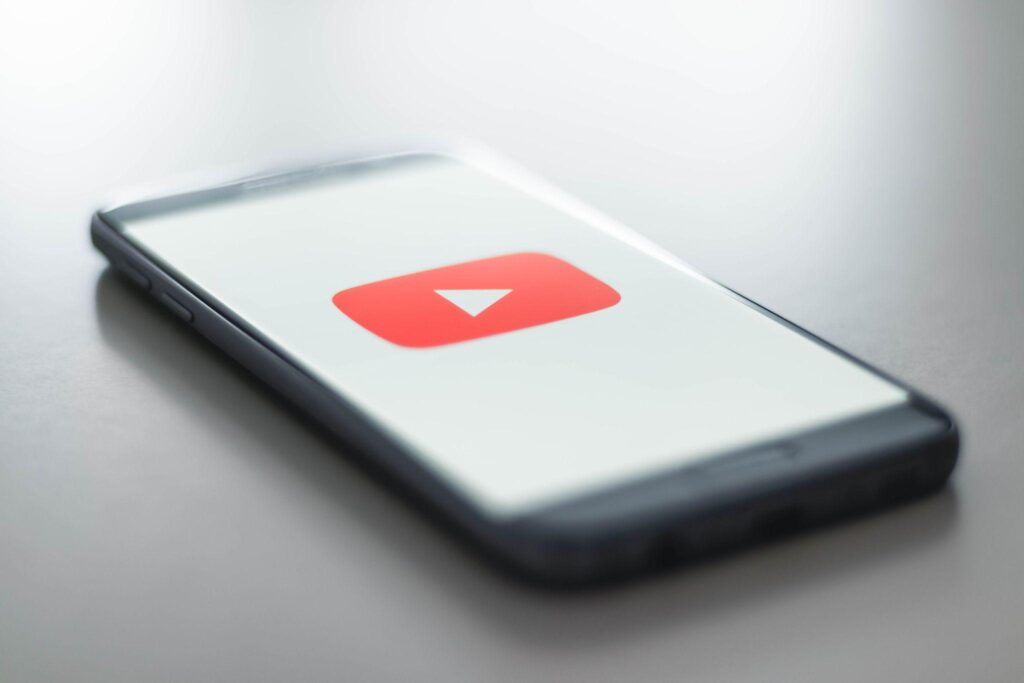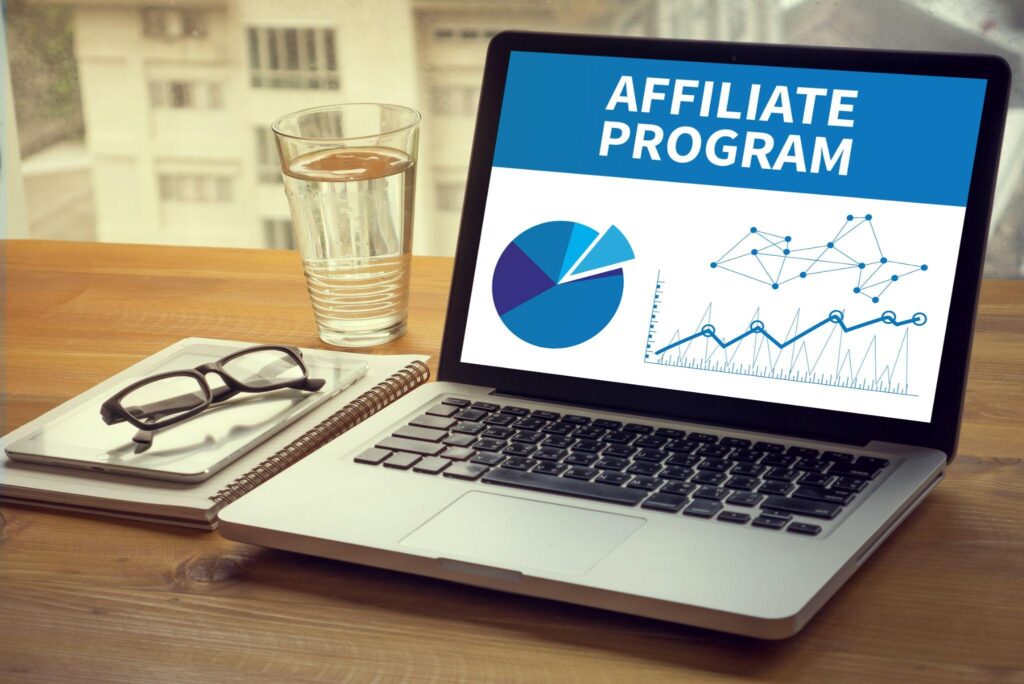Is passive income—income generated without your real-time presence—TRULY possible?
Or is it just some buzz word hurled around by “laptop lifestyle” bros sporting loud Bermuda shorts and straw fedoras who spend just a little too much time posting pictures of themselves “working” from a lounge chair two feet away from the ocean?
YES! It is possible!
Join me in this video as I guide you through the ins and outs of the top 6 most lucrative, proven ways to generate passive income.
You’ll learn:
- what passive income is (and what it isn’t)
- the different types of passive income streams
- the initial investment (if any) required for each type
- the earning potential for each type of passive income
- how “passive” each income stream really is
You can watch the video or read on for the main points.
(This post contains affiliate links, which means—at zero cost to you—I will earn a small commission if you click through and make a purchase. Thank you for your support!)
What is Passive Income?
Let’s begin by clarifying what passive income is and what it isn’t. Passive income is a form of income that does not require exchanging time for money.
This type of income requires either an initial financial investment or some effort to set up a system that will generate revenue without constant input. In theory, you could earn money even while you’re sleeping.
However, establishing such a system is not easy and requires persistence, consistency, and determination, especially when things get tough. It also takes time to set up and fine-tune, and it may take several months before you see a return on your efforts.
It’s important to note that passive income streams are not entirely passive. While you may eventually reach a stage where you can “set it and forget it,” there is a lot of work required upfront to get there. You’ll also need to put in effort on an ongoing basis to grow your income stream. In short, passive income isn’t money for nothing. It’s about setting up something on the front-end that can pay you dividends down the road.
6 Types of Passive Income
Now let’s discuss the different types of passive income. I’m going to skip the passive income streams that require significant upfront financial investment and instead focus on those that can be generated primarily through your own elbow grease.
1. YouTube
First on the list is YouTube. If you’ve watched the video that accompanies this post, you’re already familiar with what YouTube is! One way to generate passive income with YouTube is through advertising revenue.
To start, simply sign in to YouTube on a computer or mobile device and click your profile picture to create a channel. Verify your details and hit “Confirm” to officially create your channel.
Keep in mind that you won’t be able to monetize your channel immediately. Your channel must meet three requirements before it becomes eligible for monetization:
- have 1,000 subscribers
- generate 4,000 watch time hours over the past 12 months
- have a Google AdSense account set up

Initial investment: Starting a YouTube channel won’t cost you a thing! Creating a channel and an AdSense account is free, and all you really need is a smartphone or laptop to get started making videos. When I first started my channel I used just my laptop, with a window for natural light and the laptop camera and microphone to record. I didn’t invest in a professional microphone until several months in, and it wasn’t until 3 years later that I upgraded to a nice DSLR camera.
Potential Income: Your earning potential with a YouTube channel depends on the quality of your content, how much your audience is interested in it, and how consistently you publish new videos.
Passivity: Earning money through YouTube does require a time commitment and consistency. Personally, I batch-produce my videos by dedicating a few days each month to brainstorming, writing scripts, and shooting four videos at once. Once your videos are published, they’ll continue to generate income even if you take a break. For example, after having my second child, I took a few months off but still had income coming in monthly. That was amazing because it gave me time to focus on what mattered.
2. Digital Products
Next, let’s talk about digital products. What are they? Digital products are creations such as ebooks, online courses, or creative works like photography, video, or music. You sell your digital products either to your own audience through your website and email list or to someone else’s audience through their platform and email list.
Setting up a passive income stream with digital products is relatively easy. You could start by creating a simple ebook or templates and then collaborate with affiliates who will promote your book to their audiences. Alternatively, you could submit your creative works to stock websites where other people or companies can pay to use them in their own projects.
Creating an online course requires more effort. You’ll need your own website, an audience and email list, and a few weeks to several months of effort to create the course. This is what I did when I created my digital course, Low-Content Profits Academy, which has been a highly lucrative source of income for me. Before I launched the course, I had to build a small audience through my YouTube channel.

Initial investment: The costs associated with creating digital products vary. If you create an ebook or templates yourself and utilize someone else’s audience, it won’t cost you anything. On the other hand, if you want to create an online course, expect to spend $10 or less per month for web hosting, $0-$10 per month for an email service provider, and $40-$100+ per month for an online course platform like Teachable or Kajabi.
Potential Income: If you create a high-quality product that solves a problem for your audience, you have the potential to earn hundreds, thousands, or even tens of thousands of dollars per month.
Passivity: Different types of digital products require different amounts of maintenance once they’re set up. For example, ebook sales are pretty passive, while a course that you launch multiple times a year may require more ongoing work. My course, Low-Content Profits Academy, required a lot of effort in the beginning, but now that I have my systems in place it runs in the background and is now my largest source of passive income.
3. Physical Products
Next, let’s talk about physical products. There are two common ways to earn passive income in e-commerce:
- dropshipping
- Fulfillment by Amazon (FBA)
With dropshipping, you can sell other people’s products in your online store, or use a print-on-demand (POD) platform like Redbubble to sell your custom designs on items such as t-shirts or mugs. The supplier will ship the products directly to the customer, so you don’t have to deal with inventory.
For FBA, you’ll list your products for sale on Amazon and then send them to an Amazon warehouse. When an order is placed through Amazon, they will fulfill the order.

Initial investment: To get started with dropshipping, you’ll need a basic ecommerce website. Most people use the Shopify platform for this. Shopify starts around $29 a month plus transaction fees. When an order is placed on your site, you’ll pass it on to the supplier who will then fulfill the order.
If you’d rather go the print-on-demand route, you can sell your own designs on a POD platform like Redbubble for free
For FBA, you’ll have to buy products to resell and then ship them directly to Amazon’s warehouse. You’ll also need to create product listings on Amazon. The cost of getting started with FBA is approximately $2,500, including product samples, inventory, promotional giveaways, UPC codes, and a modest advertising budget.
Potential Income: While there is potential for high earnings, the steep learning curve and high competition in e-commerce make it more challenging than some of the other models discussed. Dropshipping is the easiest and most affordable way to get started.
Passivity: With dropshipping, your main responsibility after setting up your store will be customer service, which could take anywhere from a few hours per week to a few hours a day, depending on the size and success of your store. With FBA, customer service and order fulfillment are handled by Amazon.
You can expect to spend anywhere from 5 to 20+ hours per week on your e-commerce business, depending on the number of products you sell.
4. Affiliate Marketing
With affiliate marketing you earn income by promoting other people’s products or services to your audience. This can be done by creating blog articles, podcasts, videos, or other content that includes affiliate links, such as Amazon Affiliates or ClickBank.

Initial investment: To get started with affiliate marketing you’ll need a website and an email list that targets the same audience as the product or service you want to promote. Building an audience from scratch may take several months or even a few years.
The financial investment required for affiliate marketing is minimal, with basic costs starting at around $10 a month each for website hosting and an email service provider.
Potential Income: The earning potential for affiliate marketing can be substantial–from hundreds to thousands of dollars per month–depending on the popularity of your website or blog.
Passivity: Affiliate marketing is one of the most passive income streams available. Once you have set up your affiliate links, you can start earning commissions every time a customer clicks a link and makes a purchase. If you’re promoting a product to your email list, simply write a few emails or social media posts and you’re ready to go.
For a more in-depth understanding of affiliate marketing, you can check out, Affiliate Marketing 101: A Guide to Earning 6 Figures With Affiliate Marketing.
5. Niche Websites
Next up: niche websites. A niche site is a small website or blog that focuses on a specific niche and contains as much information as possible on the subject. The main sources of income for niche sites are advertising and affiliate marketing.
To generate advertising revenue, you can use sources such as Google Adsense, banner ads, sponsored posts, or paid reviews.
Affiliate sales revenue comes from writing blog articles that contain links to products related to your niche. For example, if you have a niche site about knitting you may write a blog article about a specific brand of yarn and include a link to a product the brand sells on Amazon. If someone clicks on that link and makes a purchase, you receive a commission.
Your first step in creating a niche site is to research and choose a niche. Then, create your website or blog and write articles to attract traffic and generate ad and affiliate revenue. The key to success in niche sites is having a deep understanding of search engine optimization (SEO) or being willing to invest in someone else’s expertise in this area. SEO is essential for making your articles and posts visible on Google when people search for similar content.

Initial investment: The only upfront cost for a niche site is web hosting, which costs around $10 per month.
Potential Income: The earning potential of niche sites can be huge–hundreds, thousands, or even tens of thousands of dollars per month. However, it takes time–potentially even years–to start generating significant revenue, and it depends on your ability to drive traffic to your site through SEO.
Passivity: Establishing a niche site takes a lot of work upfront, but once the site is established it can be relatively passive. You will need to periodically create fresh content for your site (new blog posts, etc), but you can outsource this work once you start generating revenue.
6. Self Publishing
I saved my favorite way of generating passive income in 2023 for last! If you know me well, it’s not a surprise that it’s self-publishing.
With the self-publishing model, you can publish books in ebook or physical format through Kindle Direct Publishing (KDP) and earn royalties every time a copy of your book is sold. One of the benefits is that you’ll be taking advantage of Amazon’s existing marketplace, which means that you don’t have to worry much about driving traffic to your products.
I’m not talking about writing a novel or a thick nonfiction volume here. Unless you’re an established author or someone with a large following, you’ll need to publish many books in a short amount of time to successfully scale a self-publishing business. You can do this by outsourcing the writing of fiction or non-fiction books, or you can follow my personal favorite approach: publishing low-content books (LCB) that you can create quickly and easily.
Low-content books are books with limited content compared to traditional books. They include:
- journals
- planners
- guest books
- log books
- coloring books
- activity books
…and other, similar books.
Low-content publishing is my favorite way to generate passive income and I still believe it’s the fastest and easiest way to start generating the largest amount of passive income.
Getting started is simple: create a book cover and interior file with the design software of your choice, upload the files to KDP, and your book will be available for sale on Amazon. Then repeat, repeat, repeat…
If you want to learn more about generating passive income by creating and selling low-content books on KDP, download my free guide, “3 Steps to Publishing Your First Low-Content Book in Less Than a Day.” You’re also invited to attend my free masterclass, “3 Secrets to a Wildly Successful Low-Content Publishing Business,” and join my free Facebook group, Low-Content Profits.

Initial investment: Creating your own books won’t cost you anything, and creating a KDP account is also free. If you’re outsourcing the work, you can expect to pay as little as $10 for a book cover on Fiverr.
Potential Income: Revenue from self-published books can range from hundreds to tens of thousands of dollars a month. I’ve made approximately half a million dollars publishing non-fiction, fiction, and low-content books under different pen names on KDP, with most of the revenue coming from low-content publishing.
Passivity: So, how passive is it really? Some books might require regular promotion, while others are more set-it-and-forget-it. At my peak publishing stage, I was spending about 20 hours a week on my low-content publishing business, but when I had my daughter at the end of 2017 I walked away for six months and still generated $10,000 to $20,000 a month passively. Not too shabby!
There you have it! The six profitable ways to generate passive income in 2023 are:
- starting a YouTube channel,
- creating and selling digital products
- selling physical products
- affiliate marketing
- creating niche sites
- self-publishing (specifically low-content publishing)
I hope I’ve gotten your wheels turning and you’re a little bit closer to choosing the passive income stream that’s right for you.
If you’re interested in learning how to start generating passive income by creating and selling low-content books on Kindle Direct Publishing (KDP), be sure to download my free guide, “3 Steps to Publishing Your First Low-Content Book in Less Than a Day.”
